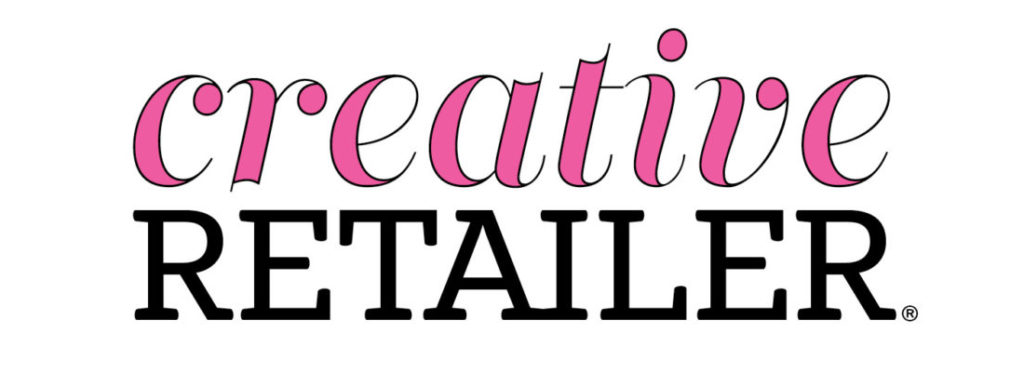Industry News
Industry News: Two Retail Exercises to Adopt RIGHT NOW!
KIZER & BENDER’s 360 Degree Pass-By exercise
To keep things in balance we recommend that you do our 360 Degree Pass-By each morning before you unlock the doors for business. This exercise should take about five minutes to complete. The first few times you won’t notice much, but the more you do it the more things that need attention will pop out. Store owners and managers should do a 360 Degree Pass-By each morning before unlocking the doors for business; store associates should do this exercise each day at the beginning of their shift. Here’s how:
1. Begin outside of your store. Does the store front require paint or repair? Is the common area outside the store cluttered or in need of clean up? Can customers easily see your window and exterior signing? Are your windows clean? Are the window displays current, neat, and fully accessorized?
2. Access the Decompression Zone: The Decompression Zone is the 5’ to 15’ just inside the front door of the store, its job is to slow down rushed and distracted customers so they can concentrate on shopping. Your Decompression Zone should be uncluttered and inviting.
3. Walk through each area of your store: This includes the checkout and service areas. Make sure that each area is clean and neat and properly set to reflect the caring professionalism of your store.
4. Walk the aisles: Shoppers need to be able to move freely through your sales floor. Is there product blocking the aisles? Can shoppers easily maneuver a cart, walker, wheel chair, motorized scooter or stroller down the aisles? Can two shoppers easily pass one another throughout the store?
5. Survey your merchandise presentation: Are your displays fresh? Do they encourage shoppers to stop and look, and entice them to buy? Are there open areas that need attention?
6. Make a quick pass though service areas and restrooms. Note anything that needs to be taken care of before the store opens.
KIZER & BENDER’s No-Fail Perception Exercise
If you do the 360 Degree Pass-By each day, you will soon become attuned to things that are out of place or need your immediate attention. Once a quarter, dig deeper with our No-Fail Perception Exercise:
1. Look at the same things that you review during your daily 360 Degree Pass-By, but during this exercise, you will spend more time observing each area.
2. Don’t fix, move or adjust anything before you do this exercise. You want a clean vision of what the sales floor really looks like on a typical day. Survey your store during regular business hours, not before opening or after closing.
3. Dress in the same attire as a typical customer. If it’s cold outside, put on a winter coat. If customers shop with children, take a stroller and diaper bag with you. It’s also a good idea to do this exercise while in a wheelchair or driving a motorized scooter.
4. Don’t just put on your coat and walk out the door, hop in your car and drive down the street. Re-enter your parking lot and drive by your store from all directions so you can see what it looks like from different perspectives.
5. Carry a notepad and make a list of things you need to do; you can prioritize your list later and make changes as necessary. You might even want to ask an associate or a customer to do the same exercise – you can compare notes later.
6. Take a look around: Do your walls need a fresh coat of paint? Does your choice of interior décor colors flatter your product? Do you have large display props that take away from the ambiance of your store?
7. Do your fixtures help sell product? Fixtures are meant to disappear so the product can shine. Eliminate any fixtures that form a barrier that limits a shopper’s view into or through the store. A good rule to follow is to place lower fixtures towards the front of the store, and taller fixtures towards the back. This gives shoppers a good line of sight throughout the sales floor.
8. Take a look at your lighting. Shoppers in their 60s we need three times the amount of light to see as well as they did in their 20s. If you have Baby Boomer customers and your lighting is bad there’s a good change they cannot see your merchandise clearly. Check for burned out bulbs and areas that may require additional lighting.
9. Do displays need to be restocked? Does product need to be fluffed? Does each display tell a story? And most importantly, are they selling product?
10. Check your checkout area to make sure it does the following:
@ Gives customers ample space to comfortably complete their transaction.
@ Has an interesting display behind it so customers continue to think about product while waiting to check out.
@ Policy signing should be inviting, polite and positive. Remove any sign that screams “NO!” and replace it with a friendlier worded sign.
@ Place high margin, low priced impulse items at the checkout to encourage add-on sales. Rotate this product weekly.
11. Review your in-store signing so it positively reflects the style and personality of your store. Can customers easily read your signs? Are there old signs that need to be removed or handwritten signs taped to fixtures that need to be redone and placed in sign holders?
12. After completing this exercise take photos of your sales floor with your cellphone or camera. A camera sees what you miss; it has no personal investment in what it sees; it only sees what is in front of it. That’s why you sometimes look at your sales floor and think, “It doesn’t look that bad!” until you take a photo. The camera doesn’t lie.
COPYRIGHT KIZER & BENDER | ALL RIGHTS RESERVED | Retail Adventures Blog


